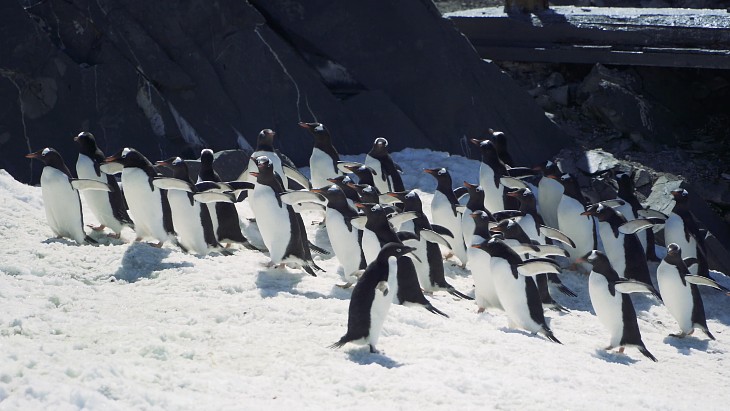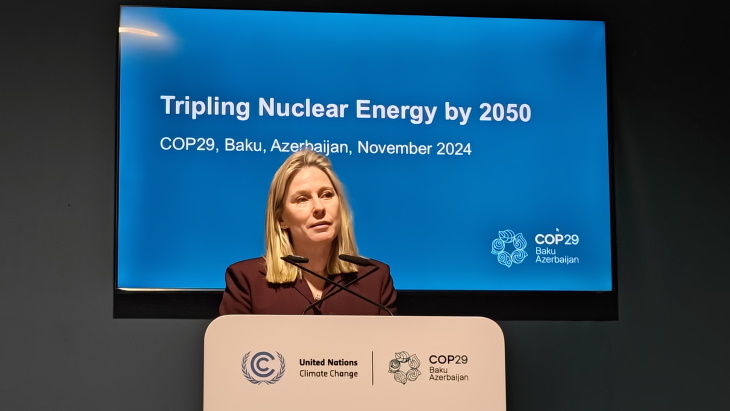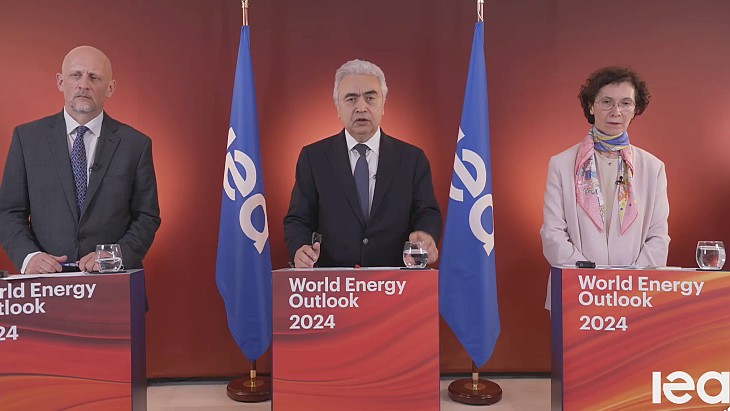Nuclear community gets ready for Paris Agreement
Countries planning to use nuclear power to meet their climate change goals will pool experience as part of a forthcoming research effort by the International Atomic Energy Agency (IAEA).
The Paris Agreement entered into force today, committing governments to limiting global warming to 2 deg C and, if possible, 1.5 deg C.
The IAEA told journalists today that it is starting to "Coordinate research efforts of member states on the assessment of the potential role of nuclear in their climate change mitigation strategies." It will cover various analytical methods, frameworks and strategies.
Loreta Stankeviciute of the IAEA's Planning and Economic Studies Section will oversee the work. She said research "would include aspects such as energy planning but also focus on the assessment and effectiveness of support mechanisms that were mentioned under the Paris Agreement such as domestic policies and carbon prices in order to identify key barriers and develop approaches to address those investments in low carbon technologies."
The head of the Planning and Economic Studies Section, David Shropshire, said IAEA tools were generalised enough to be used for any kind of energy development, not just nuclear power. To make best use of the tools, it has recently signed a practical arrangement with the International Renewable Energy Agency (Irena). The focus of cooperation between the two UN agencies has been Africa, but could be expanded anywhere, said Shropshire.
"Somehow we have to stop emissions," said Shropshire, "We have to replace a lot of infrastructure that is carbon-based with low-carbon. And nuclear, as you know, is already low carbon so we are already part of that infrastructure - that's the good news."
Separately the World Nuclear Association made clear the industry's readiness to work for the Paris goals. "The world's 450 nuclear power plants generate enough electricity to avoid the emissions of two and a half billion tonnes of carbon dioxide each year compared to the coal-fired baseload generation that nuclear typically displaces." It said that industry has endorsed a goal of supplying 25% of the world's electricity with nuclear generation by 2050, a target that will require the construction of 1000 GWe of new nuclear capacity.
Shropshire said, "It's up to each member state to decide for themselves how much [the role of nuclear] is going to be. And our role is to help them achieve whatever they want to do. Some countries - if you look and India and China - they are rapidly growing nuclear along with other energy systems to support their energy needs, and to reduce pollution, and to address climate change."
Researched and written
by World Nuclear News

_99697.jpg)








_50521.jpg)

